Adapting Jigsaw Puzzles for Younger Students
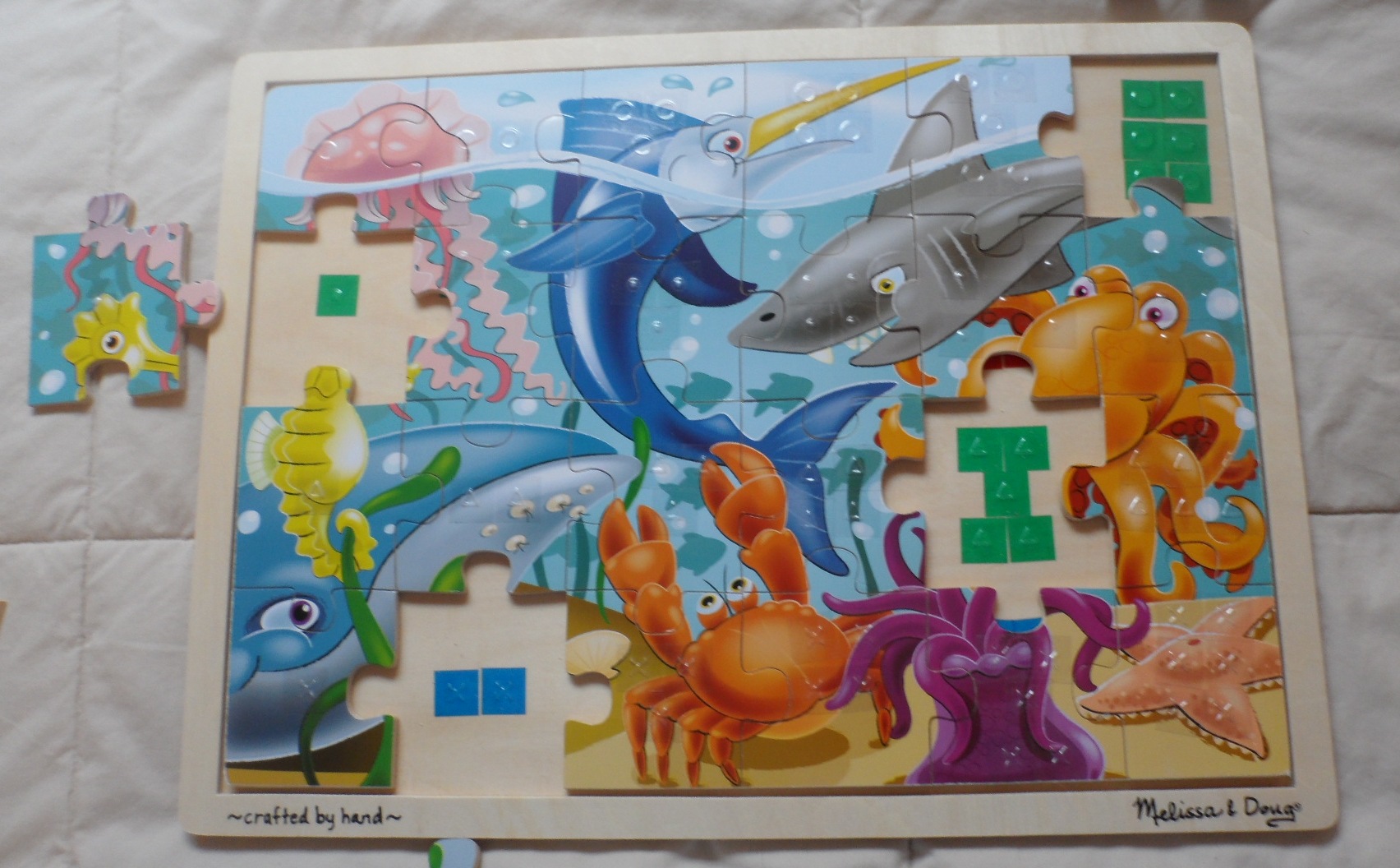
How to adapt commercial jigsaw picture puzzles for use by students who are Blind/Visually Impaired. The jigsaw pieces and the frame that holds the pieces are both 'coded' with APH Feel n Peel symbols so the child can match the symbol on the piece to the one on the frame. After some coaching, child could complete puzzle independently or with a peer / family member.
Jigsaw puzzles allow early learners so many opportunities to practice skills necessary for braille: sorting, matching, classifying, and shape identification. They allow the child to use hands independently to pick up, hold, put down, separate, join and more. Adults and children have fun working on jigsaws together while exploring spatial and positional concepts such as left/right, top/bottom. They practice many foundational problem solving and task completion skills!
I would like to thank Anthony and his mother for this idea and their help in implementing it.
Please send feedback on how this project worked with your students/ families and what improvements or modifications you made.
- Simple commercial jigsaw puzzles with a background frame (cardboard or wooden). Puzzles with more than 10 pieces should should have rectangular pieces cut in a grid pattern. Pieces need to be large enough to hold stickers which are 3/4" (or 1.5 cm). One sample is a Melissa & Doug 24 piece jigsaw on a wooden frame ($10), the other is a Crayola 12 piece on a cardboard frame ($1).
- Feel n Peel point symbols – colored for backing and clear for puzzle front
Note: Braille letters or numbers could be used if pieces were marked to show top/bottom orientation.
Assemble puzzle on frame: You will place transparent Feel n Peel Point symbol(s) on each jigsaw piece and the identical symbol(s) (in color or not) on the backing behind, so you assemble then decide on a symbol system. Code/symbol systems: One to one correspondence This is the simplest scheme since the child's task will be matching unique symbols between pieces and the frame.
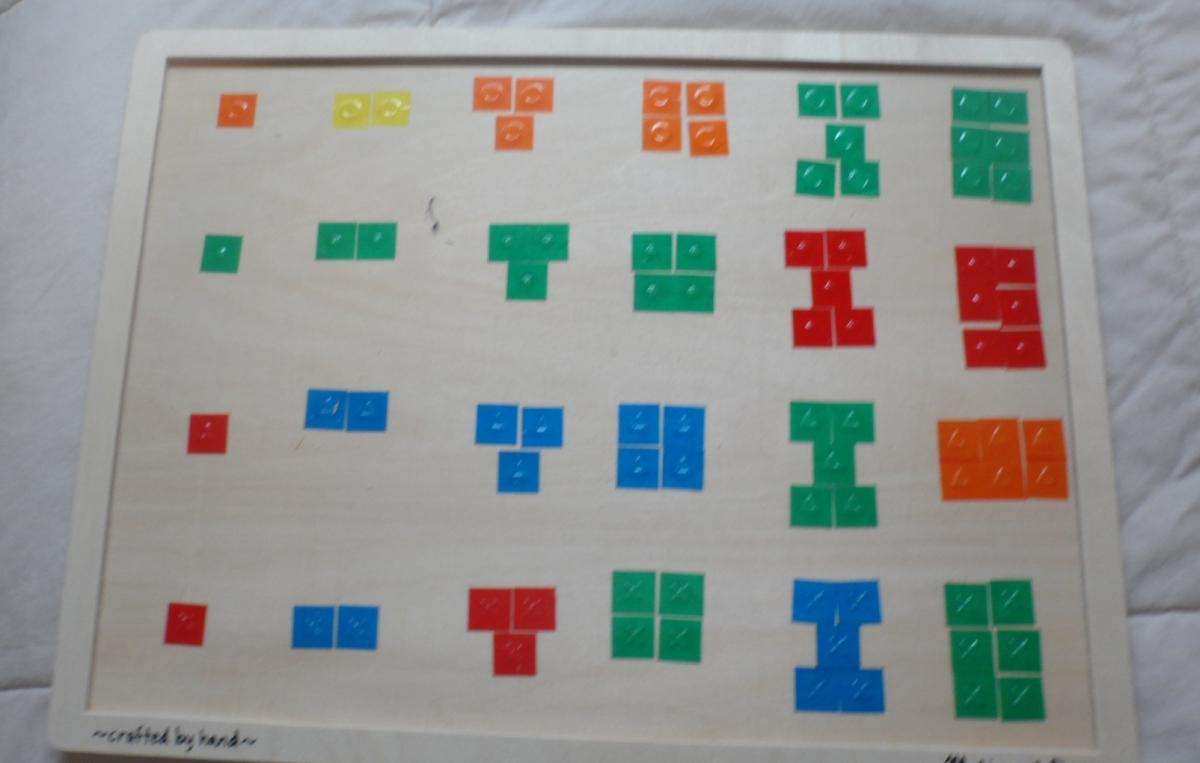 Puzzles should only have as many symbols as the child can distinguish.
Puzzles should only have as many symbols as the child can distinguish.
Grid system with counting Each item in a row has the same symbol but each column has a different number of the symbol (Pic 2, on left). For example the top left-most piece has 1 circle, to the right are 2 circles up to 6 circles on the end. Next rows might use 'bumps,' 'triangles' or 'X'es. This allows larger puzzle sizes and lets the child count. Pieces need to be large enough to hold all the stickers. Plan to have enough of each sticker type for the puzzle.
Place colored point stickers on frame
Place matching transparent stickers on the puzzle pieces Be careful when trying to reposition stickers not to tear the picture.
Grids with Braille letters or numbers Braille can be used if the pieces are modified to show orientation. For example an APH Feel n Peel symbol for row and a Nemeth number for column, or a number sign with a number for each piece.
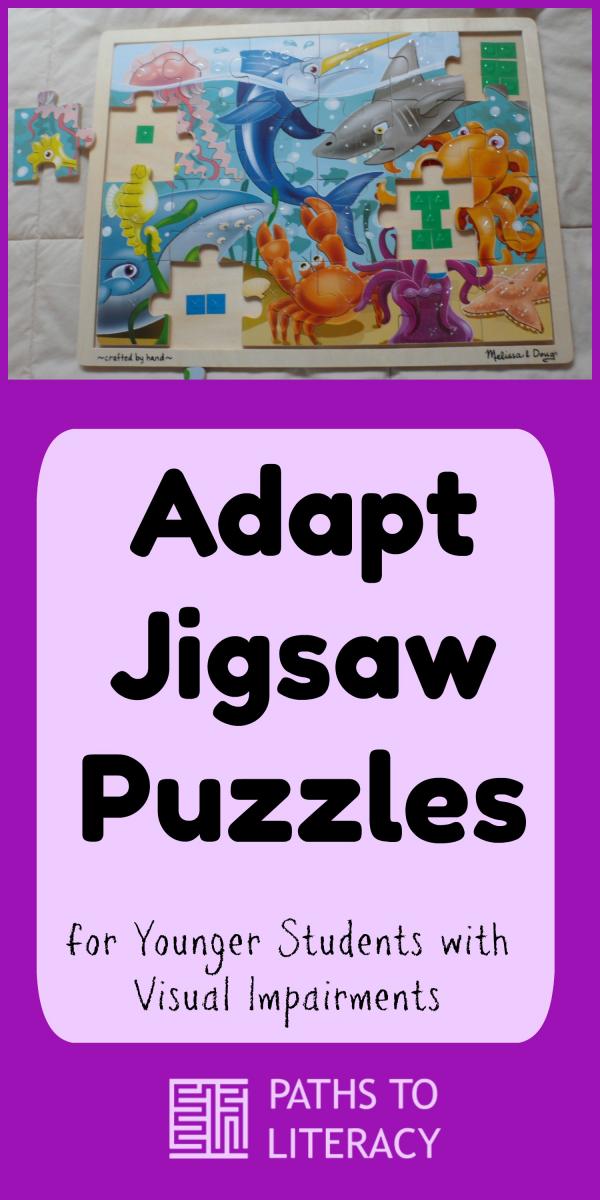

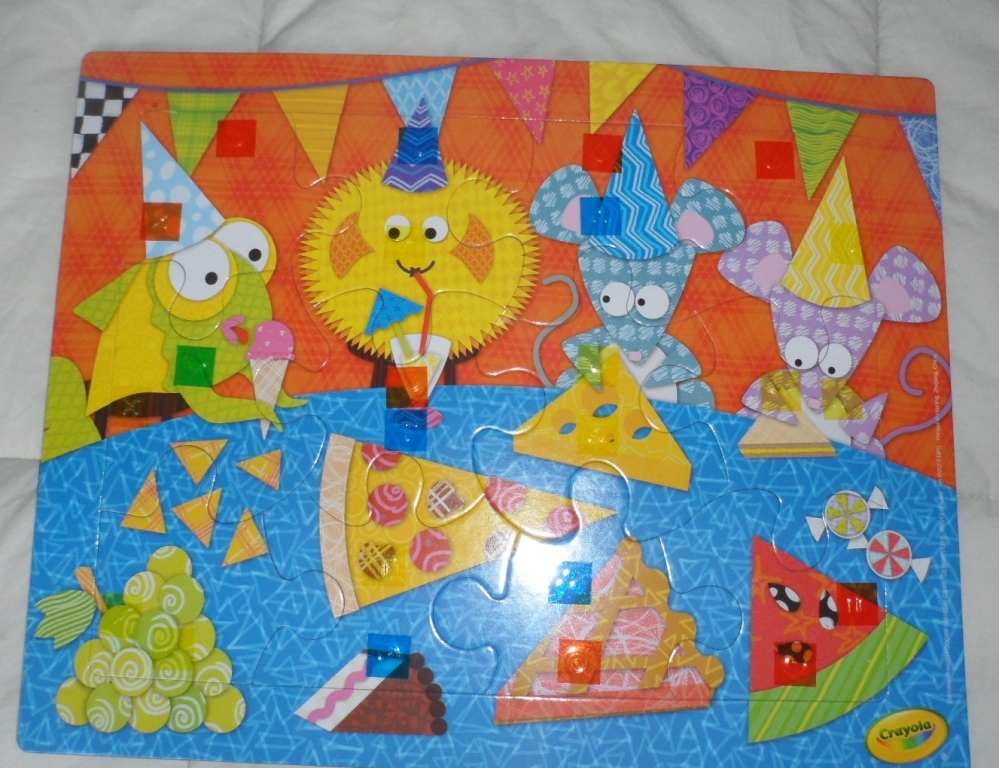
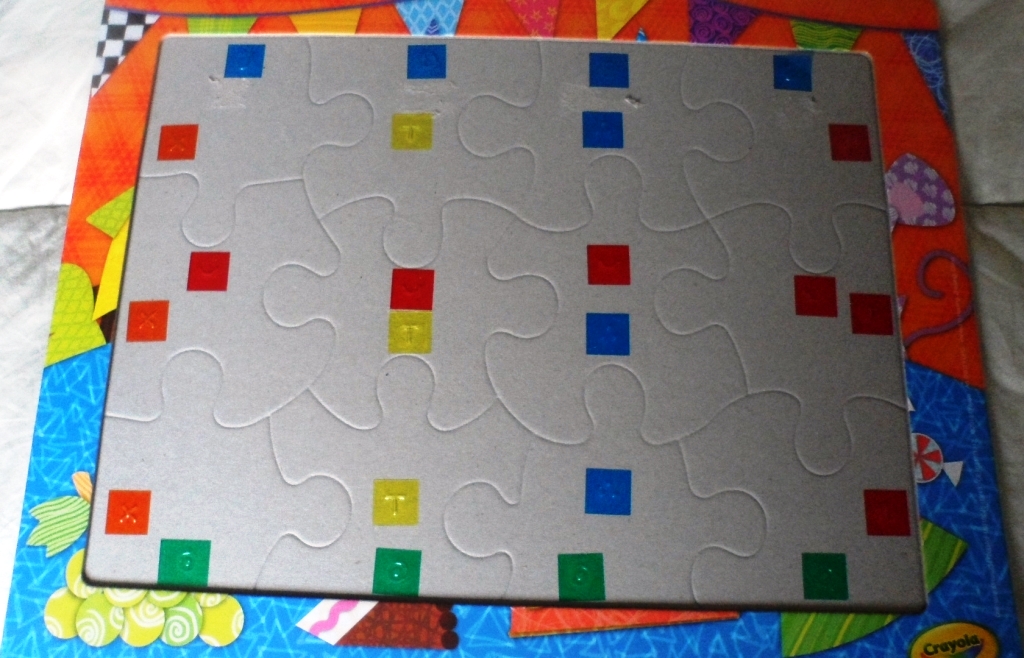
Comments
braille puzzles
Braille Puzzles